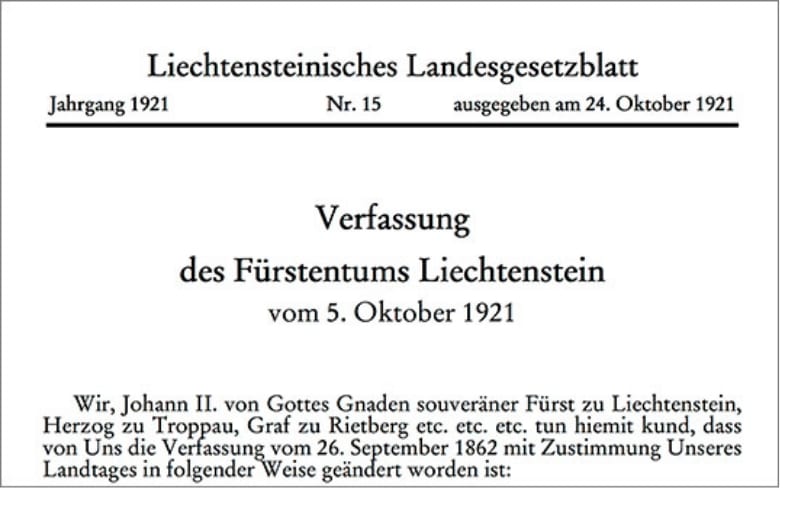
The Liechtenstein Constitution dates from 1921 and uniquely combines a parliamentary democracy with a politically active monarch and pronounced direct democratic rights of the people.
Liechtenstein's constitution of 1921 remained largely unchanged despite the political turbulence and upheavals in 20th century Europe. Only in 2003, after a comprehensive debate on the role of the monarchy in Liechtenstein, a major constitutional reform took place. In a referendum, 64.3 percent of the people voted in favour of the reform proposed by the Princely House. The counter-proposal received only 16.6 percent of the votes. The turnout was 87.7 percent
A constitutional monarchy on a democratic basis
The 2003 constitutional reform follows the vision of the Princely House of a state-supporting monarchy on a democratic basis. This represents the synthesis of monarchy with democratic legitimacy, both embedded in the social and political structure of the country. In his book The State in the Third Millennium, published in 2009 and since translated into many languages, Prince Hans-Adam II clearly sets out his personal political convictions and philosophy. His vision of strengthening the forces of democracy and monarchy in a harmonious way was already expressed in the 2003 constitutional reform, which also enshrines the principle of self-determination for the municipalities. This means that the municipalities have the option of leaving the Principality, provided that a majority of the municipalities with voting rights decides to do so in accordance with Article 4 of the Constitution.
The right to a referendum on the abolition of the monarchy
The constitutional reform brings further changes. For example, the Prince's right to issue emergency decrees is now subject to time and content restrictions (Art. 10 of the Constitution). The appointment procedure for civil servants and judges is now more balanced (Art. 11 and Art. 96 of the Constitution), and the procedure by which the Prince or Parliament can withdraw its confidence from the government is more precisely defined (Art. 80 of the Constitution). A new addition to the state's central legal document is the possibility of a motion of no confidence against the Reigning Prince via a referendum (Art. 13ter of the Constitution). According to Art. 113 of the Constitution, the citizens of the country also have the right to vote for the abolition of the monarchy via a referendum. At the same time, this paragraph shows more than any other how strongly the Princely House supports the democratic legitimisation of the monarchy.
A more detailed overview of the most important changes to the constitutional reform: